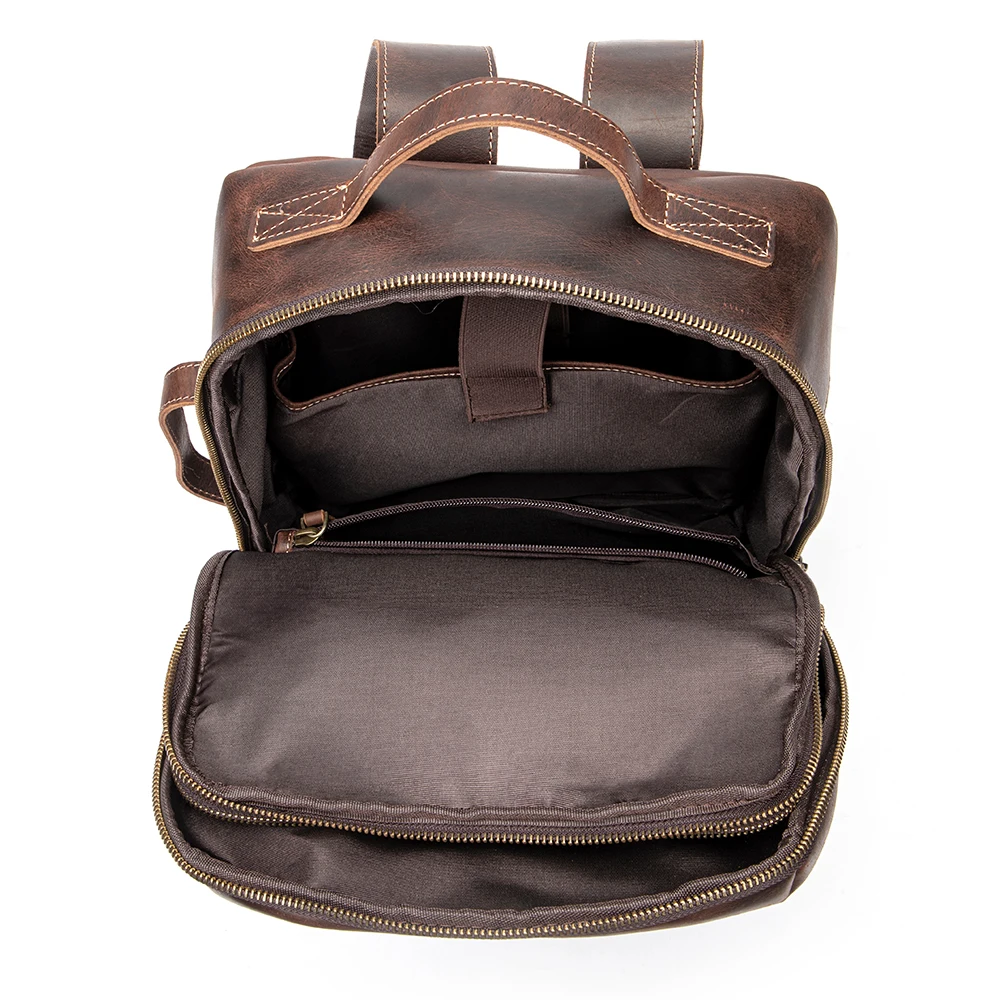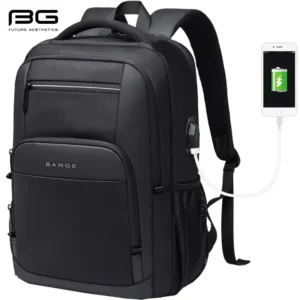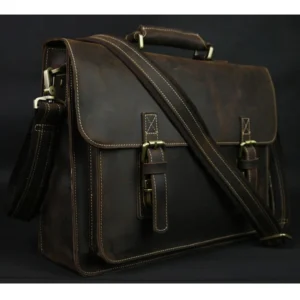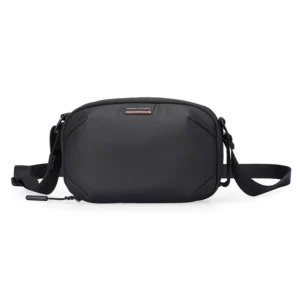The Science Behind Weight Distribution and Its Impact on Your Body
When you hoist a backpack onto your shoulders, you might not think about the complex physics at play. Yet the way weight is distributed throughout your pack directly impacts your comfort, endurance, and physical wellbeing. At its core, proper weight distribution is about aligning your load with your body’s natural center of gravity.
Your body functions best when weight is centered close to your spine and positioned between your shoulder blades and hips. This alignment maintains your natural posture and minimizes strain. When weight shifts too far from this ideal position, your body compensates by leaning forward or to one side, creating muscle imbalances and unnecessary strain.
The physics is straightforward: objects closer to your center of gravity require less energy to carry than those farther away. Think of holding a heavy book against your chest versus extending it at arm’s length—the same principle applies to backpack loads.
Different activities demand slightly different approaches to weight distribution. Hikers navigating uneven terrain need weight positioned slightly higher for better balance, while bike commuters might benefit from a lower center of gravity for stability. Understanding these fundamentals helps you adapt your packing strategy to your specific needs.
Maintaining your backpack properly is just as important as how you pack it. Regular leather conditioning and waterproofing helps preserve the structural integrity that supports proper weight distribution over time.
Critical Benefits of Proper Weight Distribution
Mastering the art of weight distribution in your backpack delivers significant advantages for both comfort and performance:
Pain Prevention: Properly distributed weight dramatically reduces strain on your shoulders, neck, and lower back. When weight is balanced close to your spine, your stronger hip and leg muscles bear more of the load, relieving pressure on more vulnerable areas. Many backpack users report immediate pain relief simply from repacking their bags.
Enhanced Stability: A well-balanced pack improves your center of gravity, making you more stable on uneven terrain. This is particularly crucial when hiking on rocky paths or navigating urban obstacles. Better stability means fewer trips and falls, especially when carrying heavier loads.
Reduced Fatigue: When weight is properly distributed, your body works more efficiently. Studies suggest that hikers with properly packed backpacks use up to 25% less energy compared to those carrying poorly balanced loads, allowing you to go farther with less exhaustion.
Improved Posture: Over time, carrying an evenly distributed pack helps maintain good posture rather than reinforcing problematic patterns. This benefit extends beyond your outdoor adventures, potentially improving your everyday posture.
Better Breathing: A properly balanced pack allows your diaphragm to move freely, enabling deeper, more efficient breathing. This becomes increasingly important during aerobic activities like hiking uphill.
Understanding the specific techniques for optimal backpack weight distribution makes a tremendous difference in your carrying comfort. For travelers, investing in quality gear like leather travel backpacks that support proper weight distribution can transform your experience.
Core Principles of Weight Placement for Optimal Distribution
Achieving proper weight distribution relies on a few fundamental principles that apply whether you’re packing for a hike, your daily commute, or international travel:
Heavy-Center-Back Rule: Position your heaviest items close to your back and centered between your shoulder blades. This keeps the weight near your body’s center of gravity, minimizing the force needed to carry it.
Vertical Zoning System: Divide your pack into three zones from bottom to top:
- Bottom Zone: Lightweight, bulky items you won’t need until camp (sleeping bag, extra clothes)
- Middle/Core Zone: Heavy items (food, cooking gear, water reservoir)
Top Zone: Medium-weight items you’ll need throughout the day (rain jacket, first aid kit)
Side-to-Side Balance: Distribute weight evenly from left to right. An imbalanced load causes your body to compensate by leaning, leading to muscle strain and discomfort.
Compression Strategy: Use your pack’s compression straps to secure items close to your back and prevent shifting during movement.
Space Utilization: Fill empty spaces with soft items like clothing to prevent contents from moving and maintain your balanced weight distribution.
Understanding the internal anatomy of structured leather backpacks helps you take advantage of purposefully designed compartments that facilitate proper weight placement.
Mastering the “Heavy-to-Back-and-Center” Rule
The most crucial principle of backpack weight distribution is positioning heavy items close to your back and centered between your shoulder blades. This approach keeps weight aligned with your body’s natural center of gravity.
When heavy objects are placed away from your back, they create leverage that pulls backward, forcing your body to lean forward to compensate. This creates unnecessary strain on your lower back, shoulders, and neck. By contrast, heavy items positioned close to your spine work with your body’s structure rather than against it.
Examples of items that should follow this rule include:
* Water reservoirs or bottles (often the heaviest items)
* Food supplies, especially dense items like canned goods
* Cooking equipment
* Electronics and power banks
* Books and heavy personal items
For optimal placement, heavy items should sit approximately 2-3 inches from your back and centered between your shoulder blades. Some exceptions exist—for extremely heavy loads on technical terrain, experienced hikers sometimes position weight slightly higher to improve balance.
Maintaining your backpack properly with conditioning treatments for leather backpacks ensures that its structure continues to support proper weight distribution throughout its lifetime.
Strategic Packing Zones: Creating a Balanced Load
To maximize comfort and stability, think of your backpack as having distinct zones, each with a specific purpose:
Bottom Zone
- Purpose: Foundation and rarely accessed items
- Ideal Contents: Sleeping bag, sleeping pad, extra clothing
- Packing Approach: Use light but bulky items to create a stable base
- Weight Category: Light to medium
Core Zone (Middle)
- Purpose: Center of gravity placement, main weight-bearing section
- Ideal Contents: Food bags, cooking gear, heavy tools, water reservoir
- Packing Approach: Position heaviest items centered and close to your back
- Weight Category: Heaviest items
Top Zone
- Purpose: Quick access and balance completion
- Ideal Contents: Rain jacket, first aid kit, snacks, navigation tools
- Packing Approach: Medium-weight items, frequently needed during the day
- Weight Category: Light to medium
External Pockets
- Purpose: Immediate access without removing pack
- Ideal Contents: Water bottles, snacks, map, sunscreen, phone
- Packing Approach: Balanced from left to right, lighter items
- Weight Category: Light
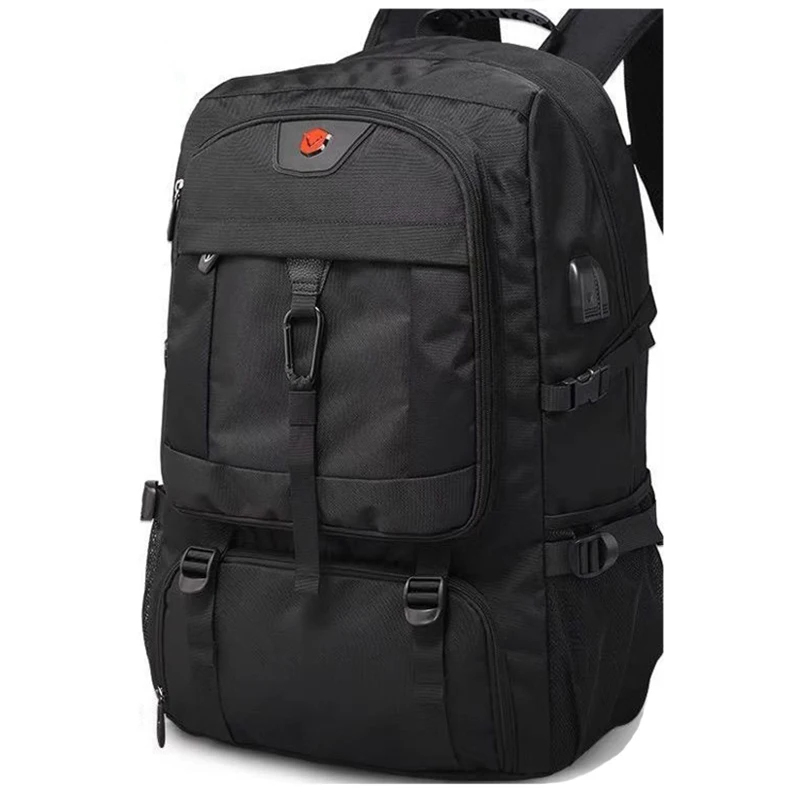
For day-to-day use, full-grain leather backpacks offer excellent structure that helps maintain these strategic zones while providing durability and style.
Preventing Unwanted Shifting: The Key to Stability
Even perfectly positioned items can shift during activity, undermining your carefully planned weight distribution. Movement is especially problematic when hiking on uneven terrain, running, or making frequent transitions between sitting and standing.
To prevent shifting and maintain stability:
Use Internal Organization Tools: Stuff sacks, packing cubes, and dry bags compartmentalize gear and prevent movement. Color-coded organizers also help with quick identification.
Fill Empty Spaces: Stuff soft items like clothing into gaps between larger, heavier objects to prevent them from shifting during movement.
Utilize Compression Straps: Both internal and external compression straps secure contents and bring weight closer to your back. Tighten external straps after packing to create a compact, stable load.
Pack Tightly: Items packed loosely will shift more readily. Create a tight, unified load rather than a collection of loose objects.
Check and Readjust: After about 15-30 minutes of activity, stop to check for shifting and readjust as needed. This small step can prevent discomfort that might otherwise build throughout the day.
For activities with more movement, consider using smaller organizers within your pack to create “modules” that stay put even during vigorous activity.
Essential Backpack Features for Superior Weight Distribution
Modern backpack design has evolved dramatically to support proper weight distribution. Understanding these key features helps you select a pack that works with your body rather than against it.
The fundamental purpose of a well-designed backpack is to transfer weight effectively from your shoulders to your stronger hip and leg muscles. Different activities require different feature priorities—a technical hiking pack emphasizes weight transfer systems, while a daily commuter bag might focus on ergonomics and organization.
Recent innovations have dramatically improved load-bearing comfort. Studies show that properly designed packs can transfer up to 80% of weight to your hips, compared to basic school backpacks that place nearly all weight on your shoulders.
When comparing backpacks, look beyond aesthetics to structural elements like frame design, padding distribution, and adjustment systems. Even minor features can significantly impact comfort during extended use.
Products like leather waterproofing treatments not only protect your investment but maintain the material integrity that supports proper weight distribution over time.
The Indispensable Hip Belt: Your Primary Weight-Bearer
The hip belt is arguably the most critical component for proper weight distribution in any pack designed for loads over 10-15 pounds. Its primary function is to transfer the majority of your pack’s weight (60-80%) from your shoulders to your hips and legs—the strongest muscles in your body.
An effective hip belt should:
* Wrap around your iliac crest (the top ridge of your hip bones)
* Provide 4-5 inches of padded surface on each side
* Offer firm support without pinching or digging
* Include adjustable straps that pull the pack close to your body
* Feature sufficient structure to support the weight being transferred
To properly position your hip belt:
1. Loosen all other straps
2. Position the belt so it wraps around your hip bones, not your waist
3. Tighten until snug but comfortable
4. Ensure equal tension on both sides
Some advanced hip belts include additional features like zippered pockets for small essentials, gear attachment points, or moisture-wicking materials. These convenience features are valuable but secondary to the belt’s primary function of weight transfer.
Remember that hip belts work most effectively when sized properly to your body dimensions—a critical consideration when purchasing a new pack.
Suspension Systems: Frames and Back Panels
The backbone of weight distribution in any quality backpack is its suspension system—the combination of frame and back panel that connects the shoulder straps and hip belt while providing structure.
Modern internal frame designs have largely replaced external frames, offering better balance, stability, and profile. Common frame configurations include:
- Peripheral Frames: Follow the outer edge of the pack, excellent for heavy loads
- Single Stay/Rod Designs: Lightweight option for moderate loads
- X-Frames: Provide good load transfer while allowing flexibility
- Full Framesheet: Offers comprehensive support and protection from pack contents
Back panel design is equally important, serving dual purposes of comfort and ventilation. Advanced designs include:
* Contoured foam panels that follow spine curvature
* Mesh tension systems that create airflow channels
* Molded panels with strategic padding and ventilation zones
Frame materials vary widely, each with distinct advantages:
* Aluminum: Excellent strength-to-weight ratio, easily moldable
* Composite materials: Lightweight with good flexibility
* High-density polyethylene: Cost-effective with moderate performance
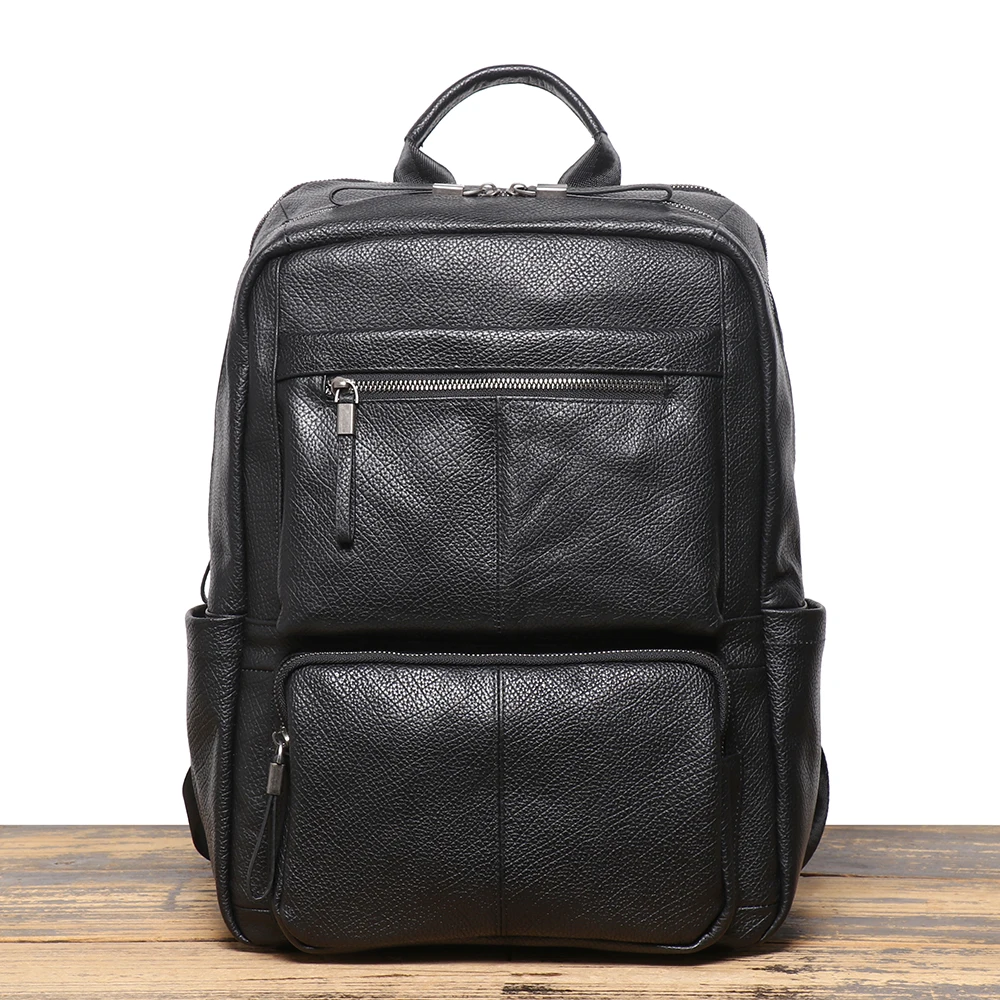
For professional settings, men’s leather laptop backpacks often incorporate sophisticated internal support structures that distribute weight effectively while maintaining a sleek, professional appearance.
Fine-Tuning Your Load: Straps and Adjustments
The true magic of weight distribution happens through proper strap adjustment. Even the best-packed backpack requires fine-tuning to work harmoniously with your body:
Shoulder Straps: Should contour to your shoulders without gaps, but shouldn’t bear most of the weight. Look for wide, padded straps that distribute pressure evenly without digging into neck or armpits.
Load-Lifter Straps: These small straps connect the top of your shoulder straps to the pack frame. When properly adjusted at a 45° angle, they prevent the pack from pulling away from your body, keeping weight centered.
Sternum Strap: Connects shoulder straps across your chest, preventing them from sliding outward. Position approximately 1-2 inches below your collarbone, snug but not restricting breathing.
Hip Belt Stabilizers: Pull the bottom of the pack close to your body, preventing sideways sway during movement.
Compression Straps: Tighten these to secure your load and bring weight closer to your back. Both internal and external compression systems help prevent shifting.
Adjustable Torso Length: Premium packs allow you to adjust the distance between shoulder straps and hip belt to match your torso length—a critical but often overlooked adjustment.
Understanding simple DIY leather care for travel backpacks helps maintain the structural integrity of straps and adjustment systems over time.
The Step-by-Step Guide to Proper Backpack Fitting
Achieving optimal weight distribution starts with a properly fitted backpack. Follow this systematic approach:
Measure Your Torso: Distance from C7 vertebra (the prominent bump at base of neck when head is tilted forward) to iliac crest (top of hip bones). Select a pack that matches this measurement.
Prepare for Fitting: Loosen all straps completely. Load the pack with 15-20 pounds to simulate realistic conditions.
Position the Hip Belt: Place the pack on your back and position the hip belt directly over your iliac crest (not your waist). Tighten until snug but comfortable, with the padded portions hugging your hip bones.
Adjust Shoulder Straps: Tighten the shoulder straps enough to pull the pack against your back, but not so tight that they take significant weight from the hip belt. The anchor points should be 1-2 inches below the top of your shoulders.
Set Load-Lifter Angles: Adjust the load-lifter straps to create approximately a 45° angle. These prevent the pack from pulling away from your upper back.
Center with Sternum Strap: Fasten and adjust the sternum strap so it’s comfortable across your chest, approximately 1-2 inches below your collarbone.
Fine-tune Stabilizer Straps: Adjust hip belt stabilizers and other compression straps to prevent side-to-side movement.
Test the Fit: Walk around, bend over, twist at the waist, and climb a few stairs. Make micro-adjustments as needed—the pack should move with you, not against you.
Signs of improper fit include pressure points, chafing, numbness in shoulders or arms, or the pack shifting significantly during movement.
Recommended Weight Guidelines for Health and Performance
Carrying too much weight negatively impacts comfort, performance, and long-term health. While individual capacity varies based on fitness, experience, and frame, these general guidelines help prevent injury:
| User Category | Maximum Recommended Weight | Ideal Range |
|---|---|---|
| Adults (General) | 20-25% of body weight | 15-20% of body weight |
| Children/Teens | 10-15% of body weight | Under 10% of body weight |
| Beginners | 15-20% of body weight | Under 15% of body weight |
| Experienced Hikers | 20-25% of body weight | 15-20% of body weight |
| Ultralight Backpackers | 10-15% of body weight | Under 10% of body weight |
For context, a 150-pound adult should generally carry no more than 30-37 pounds, with 22-30 pounds being ideal for most situations.
Activity-specific recommendations also matter:
* Day hiking: 10-15% of body weight
* Multi-day backpacking: 20-25% of body weight
* Work/school commuting: Under 15% of body weight
Warning signs that your pack is too heavy include:
* Significant pain in shoulders, neck, or back
* Tingling or numbness in arms or hands
* Difficulty maintaining balance
* Excessive fatigue relative to exertion level
For daily use, leather laptop backpacks provide excellent organization while supporting proper weight distribution for technology and everyday essentials.
Common Mistakes to Avoid for Optimal Weight Distribution
Even experienced backpack users make these common errors that undermine comfort and performance:
Top-Loading Heavy Items: Placing heavy objects at the top of your pack raises your center of gravity, creating instability and increasing strain on your shoulders. Correction: Move heavy items to the middle section, close to your back.
Back-of-Pack Weight Placement: Positioning heavy items away from your back creates leverage that pulls you backward. Correction: Place heavy items against the internal frame or back panel.
Ignoring Side-to-Side Balance: Uneven weight distribution from left to right causes your body to lean to compensate. Correction: Mentally divide your pack in half vertically and ensure similar weight on each side.
Loose Compression Straps: Failing to use compression systems allows contents to shift during movement. Correction: Tighten all compression straps after packing to create a unified, stable load.
Improper Hip Belt Position: Wearing the hip belt around your waist rather than your hip bones prevents effective weight transfer. Correction: Position the belt to hug the top of your hip bones (iliac crest).
Over-Tightening Shoulder Straps: Pulling shoulder straps too tight shifts weight away from your hips. Correction: Tighten just enough to keep the pack against your back without bearing substantial weight.
Unnecessary Items: Every extra ounce compounds the challenge of weight distribution. Correction: Critically assess each item’s necessity before packing.
Many users report immediate comfort improvement simply by repositioning their existing load according to these principles.
Special Considerations for Different Activities
Weight distribution principles apply universally, but different activities require specific adaptations:
Day Hiking
- Prioritize quick access to essentials like water, snacks, and weather protection
- Position water weight centrally for balance on uneven terrain
- Use a slightly higher center of gravity for agility on trails
Multi-day Backpacking
- Implement strategic consumption planning (eat heaviest food first)
- Adjust distribution as supplies diminish during trip
- Balance comfort needs against weight considerations
Travel
- Arrange items for security checkpoint efficiency
- Position valuables securely against your back
- Create easily accessible compartments for documents and small essentials
School/Commuting
- Distribute laptop weight close to back panel
- Position books and heavier materials centrally
- Consider daily access patterns when organizing contents
Running/Trail Running
- Minimize overall load to essentials only
- Use specialized compression systems to prevent bouncing
- Position water weight symmetrically to maintain running form
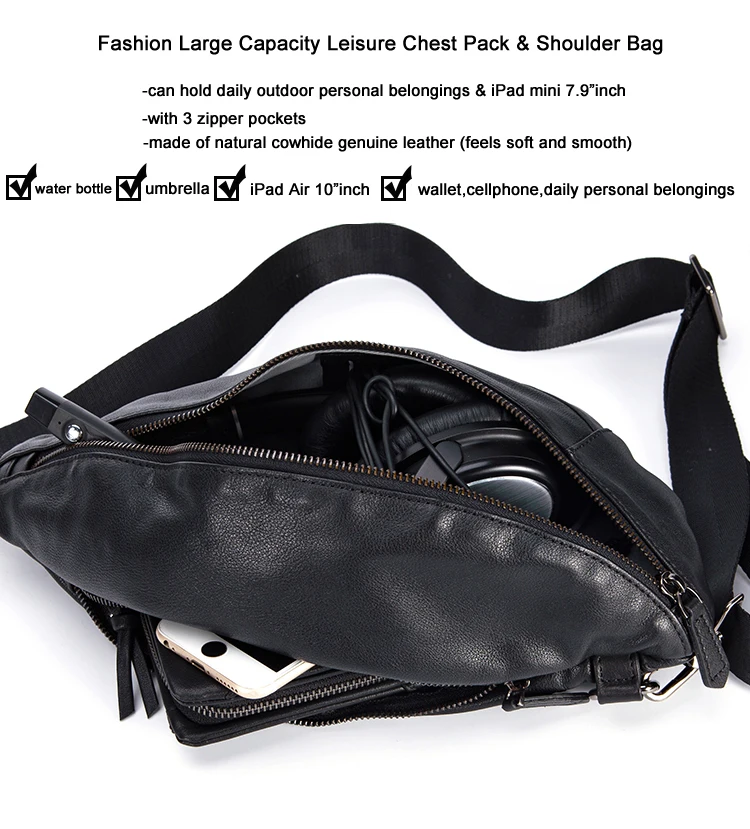
For activities requiring unique weight distribution approaches, specialized designs like crossbody leather sling backpacks offer alternative carrying solutions that redistribute weight across different muscle groups.
14 Inch Leather Laptop Backpack, Brown Leather Backpack, Men's Leather Backpack, Vintage Leather Backpack
Price range: $177.28 through $199.12 Select options This product has multiple variants. The options may be chosen on the product pageCarry On Leather Backpack, Roll Top Leather Backpack
Price range: $77.76 through $96.48 Select options This product has multiple variants. The options may be chosen on the product pageDesigner Men's Backpack, Men's Leather Laptop Backpack, Men's Leather Work Backpack
Price range: $158.04 through $160.04 Select options This product has multiple variants. The options may be chosen on the product pageBrown Leather Sling Backpack, Crossbody Leather Sling Backpack, Men's Leather Sling Backpack
Price range: $191.96 through $193.72 Select options This product has multiple variants. The options may be chosen on the product page15 Inch Leather Laptop Backpack, Leather Briefcase Backpack
$332.96 Select options This product has multiple variants. The options may be chosen on the product pageBlack Leather Sling Backpack, Crossbody Leather Sling Backpack, Small Leather Sling Backpack
Price range: $103.88 through $104.08 Select options This product has multiple variants. The options may be chosen on the product page
Advanced Techniques for Experienced Backpack Users
As you become more familiar with weight distribution basics, these advanced approaches can further refine your carrying comfort:
Dynamic Weight Adjustment: Temporarily shift weight higher in your pack when ascending steep terrain, then lower it for descents and flat ground. This subtle adjustment improves balance when you need it most.
Progressive Loading Strategy: For longer trips, pack consumables (food, fuel) so the heaviest items are used first, automatically improving your pack’s weight-to-capacity ratio over time.
Micro-Balance Techniques: Use small, dense items like batteries or cooking equipment to counter-balance other necessary but awkwardly positioned gear.
Variable Compression: Adjust compression straps throughout the day as your pack contents shift and settle. Many experienced hikers slightly loosen shoulder straps when ascending and tighten them for descents.
Seasonal Adaptations: Summer and winter packing require different approaches. Winter gear tends to be bulkier but not necessarily heavier, requiring different compression strategies.
These techniques develop naturally with experience, but consciously implementing them can accelerate your mastery of comfortable load carrying.
Our Premium Leather Backpacks: Designed for Optimal Weight Distribution
At Summit Carry, we’ve carefully designed our leather backpack collection with weight distribution science at the forefront. Our craftspeople understand that true comfort comes from the harmonious relationship between pack design and human biomechanics.
Our premium leather backpacks feature strategically reinforced back panels that maintain their structure even after years of use. The natural properties of full-grain leather actually complement weight distribution—it offers structure without excessive rigidity, conforms to your body over time, and maintains its integrity through countless adventures.
We’ve integrated sophisticated harness systems that might not be immediately visible but make a tremendous difference in carrying comfort. Our shoulder straps feature high-density foam cores that distribute pressure evenly without creating pressure points, while our hip belts are positioned at the biomechanically optimal height.
Even our internal compartmentalization is purposefully designed to encourage proper packing habits, with heavier items naturally finding their place close to the back panel. This thoughtful design means you’ll intuitively pack in ways that enhance comfort and stability.
Quick Reference: Pre-Adventure Checklist for Optimal Weight Distribution
Before heading out with your packed backpack, run through this quick checklist to ensure optimal weight distribution:
✓ Heaviest items positioned center-back, between shoulder blades
✓ Similar weight on left and right sides of pack
✓ No loose or shifting items inside pack
✓ All compression straps engaged and tightened
✓ Hip belt positioned over hip bones, not waist
✓ Shoulder straps snug but not bearing majority of weight
✓ Load-lifter straps adjusted to approximately 45° angle
✓ Sternum strap fastened at comfortable tension
✓ Overall pack weight within recommended guidelines
✓ No items hanging or swinging from outside of pack
After walking 15-20 minutes, stop and perform a quick readjustment if needed. This small step can prevent discomfort from developing over longer periods.
A simple test: With the pack on, have someone gently push you forward from behind. You should be able to resist without significant strain, indicating your weight is properly centered.
Why Does Proper Weight Distribution Matter for Long-Term Health?
The implications of backpack weight distribution extend far beyond immediate comfort. Medical professionals increasingly recognize that habitual carrying patterns have significant long-term health impacts.
Q: Can improper weight distribution cause permanent problems?
A: Yes. Research shows that consistently carrying unbalanced loads can contribute to chronic postural issues, muscle imbalances, and even spinal deviations over time. The body gradually adapts to repeated strain patterns, potentially leading to lasting changes in posture and movement.
Q: Are younger users at greater risk?
A: Young people whose bodies are still developing are particularly vulnerable. Their musculoskeletal systems are more adaptable, which means poor habits can more easily become structurally incorporated. This underscores the importance of teaching proper backpack habits early.
Q: What’s the most overlooked aspect of backpack health?
A: Many people focus exclusively on weight limits while ignoring distribution. A properly distributed 25-pound load may cause less strain than a poorly distributed 15-pound load. The relationship between your pack’s weight placement and your body’s biomechanics is just as important as the total weight.
The good news is that even small adjustments to how you pack and wear your backpack can significantly reduce your risk of developing chronic issues, allowing you to enjoy activities requiring load-carrying well into the future.

